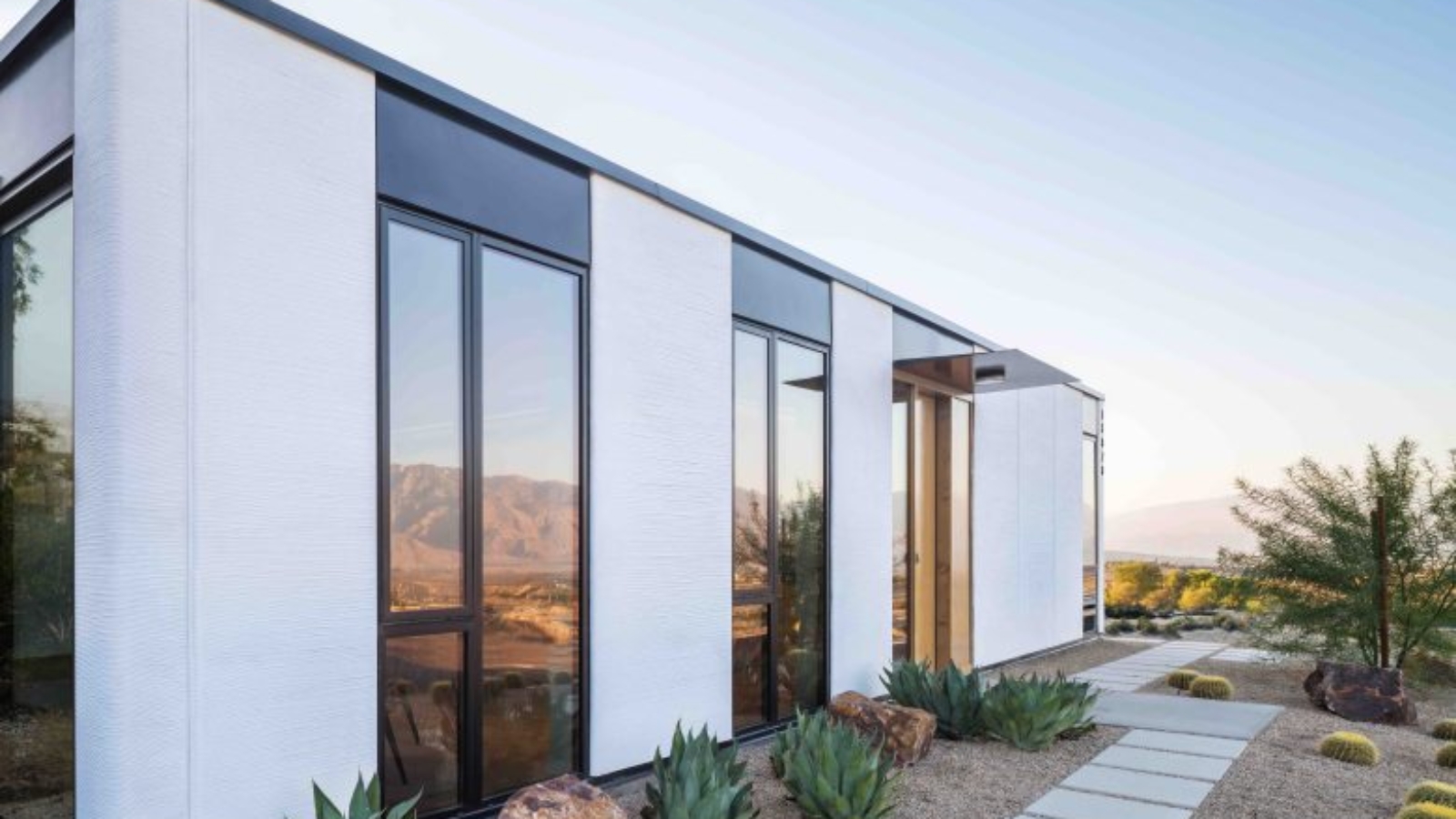At the recent AM Strategies 2023 conference, in New York, Voxel Matters caught up with Alexey Dubov, Co-Founder and Chief Innovation Officer of Mighty Buildings – a Californian company that was founded and went through the Y Combinator program in 2018 (W18) that is transforming the way we make homes, using some of the latest manufacturing technologies.
According to the United Nations Environment Program (2021), 27% of the world’s CO2 emissions are a direct result of residential housing construction. Mighty Buildings claims that 600 million tons of waste are generated annually in the US alone. Considering this, the company’s goal of delivering carbon-negative construction by 2028, 22 years ahead of the construction industry, only seems more ambitious.

A new approach to 3D printing for housing
Just last year, the company opened another factory in Monterrey, Mexico, and shipped panels to the first site within four months, according to Alexey, who also mentioned that Mighty Buildings was currently focused on housing for residential use.
Using its patented 3D printing technology, in comparison to traditional fabrication methods, Mighty Buildings is able to double the build speed, and reduce waste by 99% – using 60% recycled materials.
Not only is the company’s fabrication notably effective and sustainable, but the final homes are also claimed to be earthquake and hurricane resistant; insulated and soundproof; water, mold, mildew, and insect resistant; and have class A surface burning resistance.

“We actually incorporated a new generation of panels, just to make them stronger. So that’s how we achieved that ability to withstand wind loads of 180 mph. Also, the panels were tested for hurricane impact. This is important for Florida, for example, and also for other regions,” said Alexey.
In addition to this, Mighty Buildings offers the option of pre-equipping the buildings with solar panels and storage, as well as customizing the shape and color of the 3D printed panels.
Manufacturing on Demand
A mighty material
When creating the homes of the future, the company collaborates with external architects and engineers and uses its patented Mighty Kit System to fabricate panels, thanks to an automated factory, that are then assembled onsite, with minimal human labor.
The 3D printed panels are made with Mighty Buildings’ patented composite Light Stone Material, which has 4x the tensile and flexural strength, and is 30% lighter, compared to concrete.
While the melted composite is printed into the form of panels, it is impregnated with continuous fibers (although panels can be printed without impregnated fibers too), and cured with UV light. These panels are then coated with epoxy-based primer and acrylic paint—leaving no air or water-permeable barriers.
The added Polyurethane foam insulation process also generates nearly no waste, and offers a customizable R-value (the measure of resistance to heat flow through a given thickness of material).

The company uses glass fiber reinforcement to replace the traditionally-used steel rebar, which results in notably robust houses. “Our buildings have a longevity of more than 50 years. So, with a little bit of a premium compared to traditional material, the customer is getting an envelope build of stone that can withstand the loads and all other stuff for 50 years with almost zero maintenance,” said Alexey.
“We have full certification for the single-story system. Right now, we have the ongoing certification for two stories and after that three stories,” concluded Alexey. “It is likely that we’re going to deliver one unit with two or three stories, at something like the beginning of next year.”
You might also like:
PERI to build Europe’s largest 3D printed building in Heidelberg: Heidelberg Materials is supplying around 450 tonnes of the high-tech special mortar i.tech® 3D, which contains a CO₂-optimized binder. Concrete printing with 100% recyclable material allows design freedom, up to 70% less material usage, and safer work at the construction site.
* This article is reprinted from 3D Printing Media Network. If you are involved in infringement, please contact us to delete it.
Author: Edward Wakefield



Leave A Comment